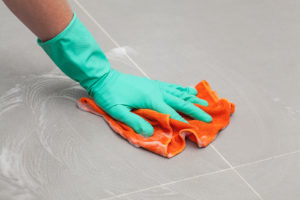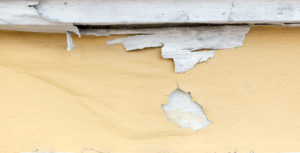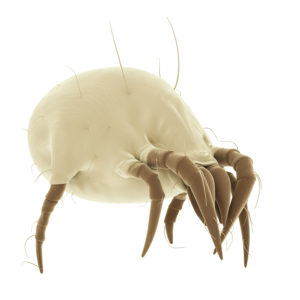Creating a Healthy Home Step 1: Clean
go.ncsu.edu/readext?524033
en Español / em Português
El inglés es el idioma de control de esta página. En la medida en que haya algún conflicto entre la traducción al inglés y la traducción, el inglés prevalece.
Al hacer clic en el enlace de traducción se activa un servicio de traducción gratuito para convertir la página al español. Al igual que con cualquier traducción por Internet, la conversión no es sensible al contexto y puede que no traduzca el texto en su significado original. NC State Extension no garantiza la exactitud del texto traducido. Por favor, tenga en cuenta que algunas aplicaciones y/o servicios pueden no funcionar como se espera cuando se traducen.
Português
Inglês é o idioma de controle desta página. Na medida que haja algum conflito entre o texto original em Inglês e a tradução, o Inglês prevalece.
Ao clicar no link de tradução, um serviço gratuito de tradução será ativado para converter a página para o Português. Como em qualquer tradução pela internet, a conversão não é sensivel ao contexto e pode não ocorrer a tradução para o significado orginal. O serviço de Extensão da Carolina do Norte (NC State Extension) não garante a exatidão do texto traduzido. Por favor, observe que algumas funções ou serviços podem não funcionar como esperado após a tradução.
English
English is the controlling language of this page. To the extent there is any conflict between the English text and the translation, English controls.
Clicking on the translation link activates a free translation service to convert the page to Spanish. As with any Internet translation, the conversion is not context-sensitive and may not translate the text to its original meaning. NC State Extension does not guarantee the accuracy of the translated text. Please note that some applications and/or services may not function as expected when translated.
Collapse ▲Creating a healthy home involves 7 steps. Step one is CLEAN.
Why a clean home is an important step toward a healthy home: Houses that are kept clean will help reduce family members’ exposure to many indoor pollutants such as bacteria, lead, and allergens like dust mites. A neat, clean house is also less inviting to mice, rats, and other pests. And a tidy house is also a safe house. Toys, reading materials, shoes, and other items left on floors can create tripping hazards, especially if left on stairs.
A clean house controls allergens: House dust mites are tiny bugs, too small to be seen by the naked eye. They feed on shed human skin cells. The fecal pellets of dust mites contain potent allergens and asthma triggers. If your eyes start to burn and water when you stir up dust in your home or when you make a bed, you  are likely having an allergic reaction to dust mite allergens. Regular cleaning of your house using proper techniques can easily keep your home free of many allergens, including those from dust mites.
are likely having an allergic reaction to dust mite allergens. Regular cleaning of your house using proper techniques can easily keep your home free of many allergens, including those from dust mites.
A clean house reduces children’s exposure to lead: Another common component of household dust is lead. Older homes, those built prior to 1978, often contain lead painted surfaces. Paint chips and dust from friction and impact surfaces as well as painting and remodeling activities are often the source of lead in these older homes. But newer homes are not completely immune to lead contaminated household dust. Until 1986 gasoline used by motor vehicles contained lead additives . When catalytic converters became required on cars and trucks, lead additives were removed from gasoline because lead destroys catalytic converters. But until that time, millions of tons of lead were released into the environment along highways and streets across the United States. Much of this lead settled on lawns and gardens surrounding homes. When dirt and dust get tracked  indoors it often contains some of this lead. By regularly cleaning your home you help prevent children’s exposure to lead-contaminated household dust.
indoors it often contains some of this lead. By regularly cleaning your home you help prevent children’s exposure to lead-contaminated household dust.
Special cleaning methods should be followed when cleaning surfaces if your home was built prior to 1978. For more information about lead paint and lead exposure, see the EPA page on lead.
A clean house helps reduce pests: A clean house also helps to control pests like rats and mice. They need places to hide and make nests. Keeping your home free of clutter deprives pests of these hiding places and discourages them from coming into and staying in your home. Washing dirty dishes and wiping kitchen work surfaces after each meal helps deprive pests of food. If pests don’t find food in your home, they will not stay.
Cleaning methods for controlling allergens in your home:
Household dust contains many different compounds, including pieces of human skin, insect parts, rodent and insect feces, plant pollen, textile fibers, and many other items. Exposure to these compounds and the potential for inhaling them when dust becomes airborne is not healthy. Control household dust by vacuuming floors once or twice weekly with a HEPA vacuum or a regular vacuum fitted with a HEPA bag. HEPA is an abbreviation for high-efficiency particulate air filter. These types of bags can trap almost all dust sucked up by a vacuum and therefore keep it from being blown back into the air via the vacuum exhaust port. HEPA filters for most types of vacuums can be purchased at vacuum cleaner supply outlets. Note that adding a HEPA bag to a conventional vacuum cleaner is not always as effective as using a HEPA vacuum cleaner. Because of loose fittings or connections, conventional vacuum cleaners can release dust into the air while they are operating, even if a HEPA bag is used.
for most types of vacuums can be purchased at vacuum cleaner supply outlets. Note that adding a HEPA bag to a conventional vacuum cleaner is not always as effective as using a HEPA vacuum cleaner. Because of loose fittings or connections, conventional vacuum cleaners can release dust into the air while they are operating, even if a HEPA bag is used.
Cleaning strategies for controlling dust mites: House dust mites often live in mattresses and pillows. Washing pillow cases and sheets once per week in hot water (130 degrees or hotter) can help control them. Placing allergy proof encasements over pillows and mattresses is also a very effective control measure. These encasements should be washed once a week in hot water.
General cleaning tips and information
The Kitchen:
- Make cleanup a habit and perform cleaning chores regularly. The list below gives suggestions on how often to clean various items in your kitchen:
Every Day:
- Wash dishes
- Wipe kitchen work surfaces (countertops, cook-tops, sinks)
- Sweep kitchen floor
- Empty Trash
Once a week:
- Check refrigerator and throw out spoiled food
- Mop floor
- Scrub kitchen sink
- Disinfect kitchen cleaning sponges
- Wash and rinse kitchen trash can
Every Three to Six Months depending on condition of surfaces:
- Wash face of kitchen cabinets
- Thoroughly clean refrigerator and microwave oven
- Clean out and wash cupboards
- Wash walls and woodwork
- Wash curtains
- Clean oven
- Wash light fixtures


